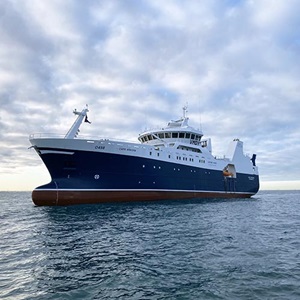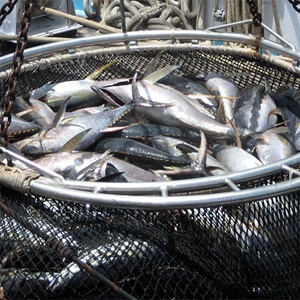A project to improve understanding of silky shark survival rates following accidental capture in purse seine nets and to identify strategies to reduce mortality.
- Electronic tagging of silky sharks to monitor survival.
- Data collection and sampling to identify factors that could influence whether a shark survives once released.
- Improve handling and release techniques.
Start date: 01 April 2023
USD $59,996
(GBP £50,251) awarded
Awardee
TUNACONS Foundation
Fishery
Eastern Pacific Ocean tropical tuna purse seine fishery
Better protections needed for silky sharks
Silky shark bycatch occurs in tropical tuna purse seine fisheries worldwide.
In the MSC certified Eastern Pacific Ocean tropical tuna fishery, retention of silky sharks is not permitted, and the number of sharks released alive has increased from 19% in 2011 to 70% in 20211. However, the post-release survival rate of these sharks is unknown.
The Inter-Americas Tropical Tuna Commission (IATTC) has implemented conservation measures for silky sharks, with the aim of reducing the impacts of purse seine fishing gear on the species. To help achieve this, further research is needed to better understand how silky shark populations are affected, and to develop new management measures to improve survival rates.
Electronic tagging to monitor survival rates
Silky sharks that have been accidentally caught by the fishery will be fitted with satellite tags and monitored for 60 days post-release.
On-board observers will record the size of silky sharks caught, how they have been handled and their condition at the time of release. Blood samples will also be taken and analysed for stress markers.
All data gathered will be analysed by IATTC scientists, and used to estimate survival rates and identify factors that may influence whether a shark is likely to survive.
Improving sustainability at scale
The findings from the study could support the development of more effective handling and release practices, reducing silky shark mortality rates. Improved knowledge and practices may serve as a guide to other tuna fisheries in Ecuador seeking certification to the MSC Fisheries Standard.
The project also marks the first step in a larger study to better understand survival rates in silky sharks. The IATTC intends to gather a more data on the factors impacting silky shark survival, including the different bycatch reduction strategies used throughout the fleet.



